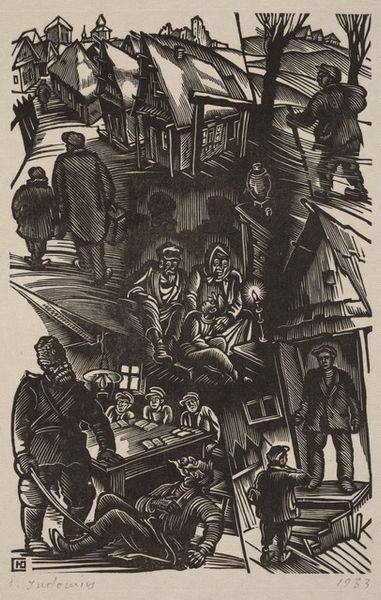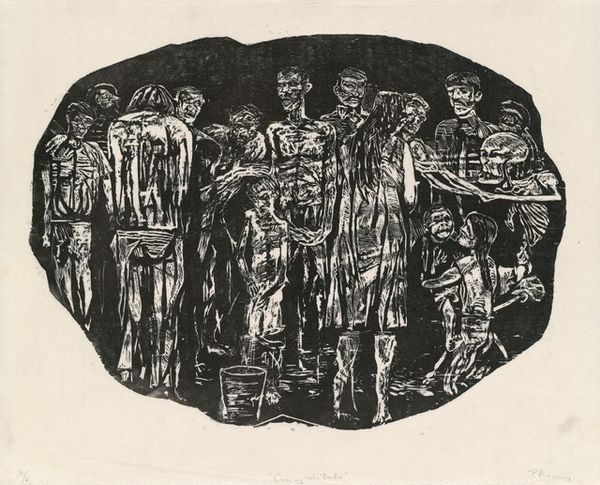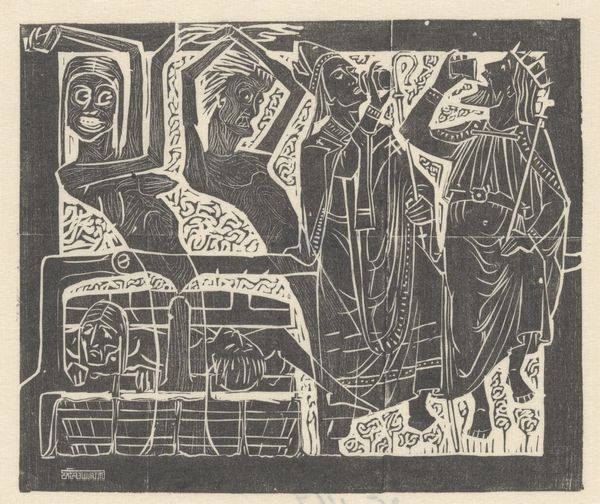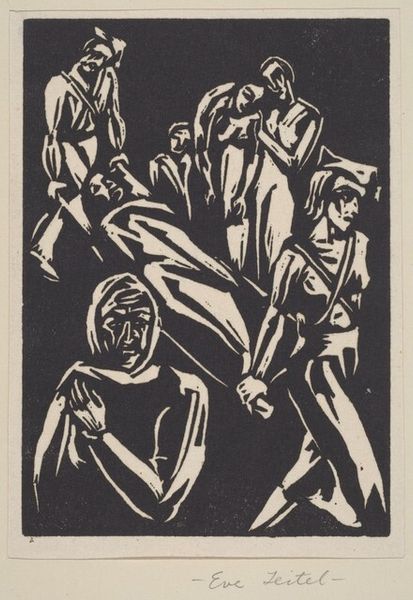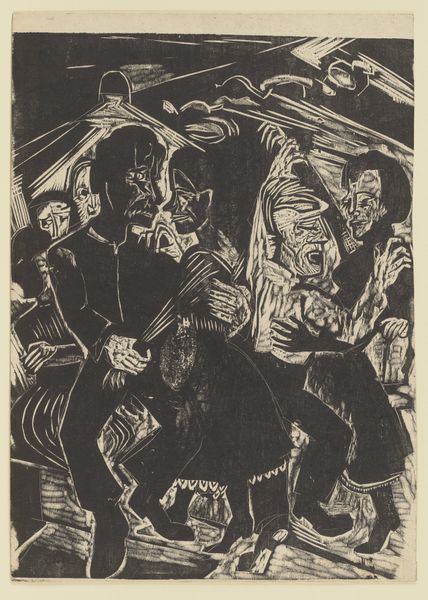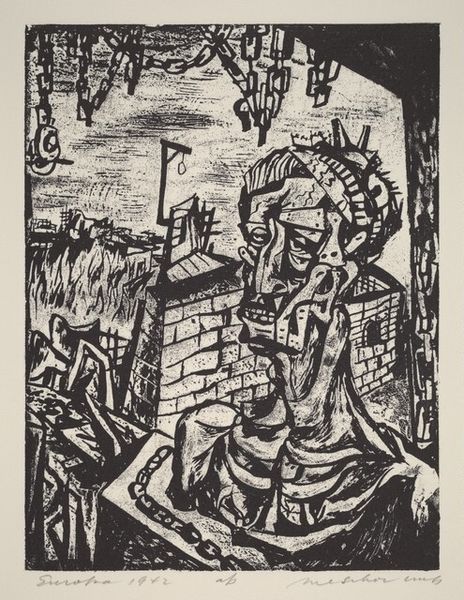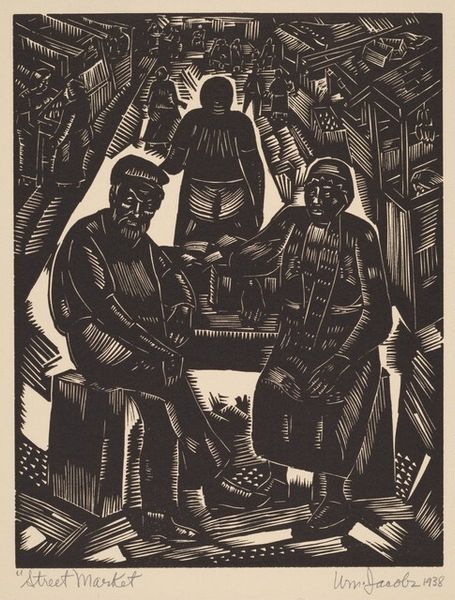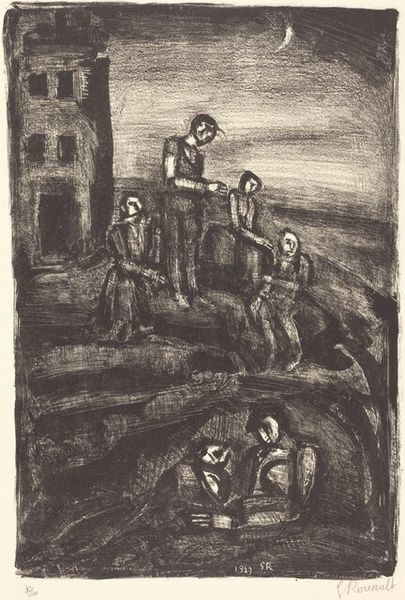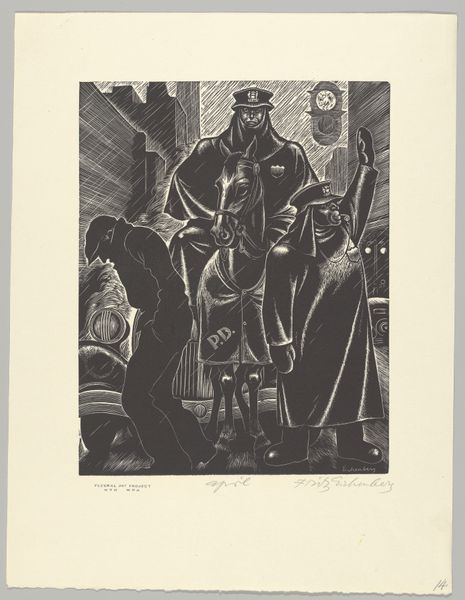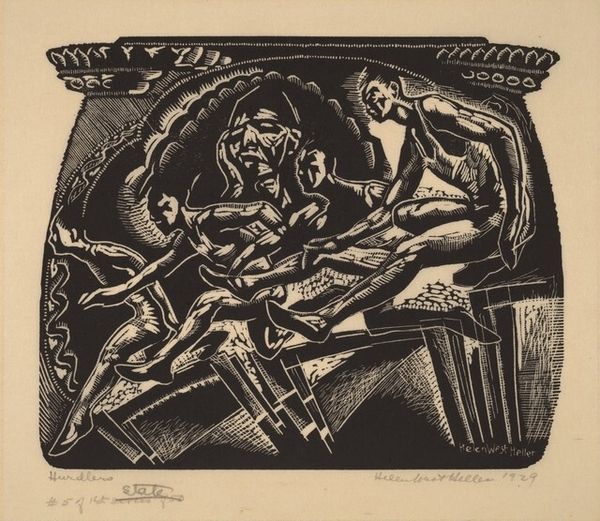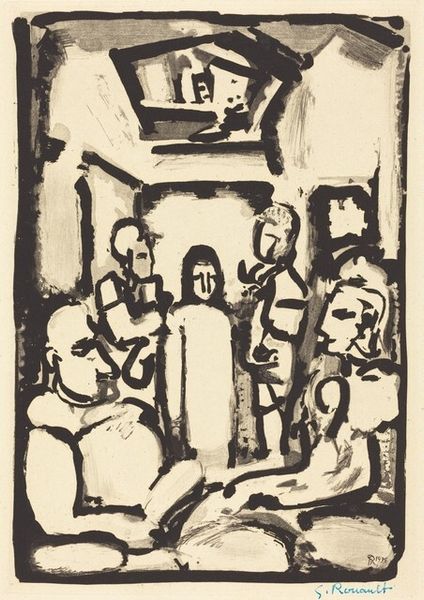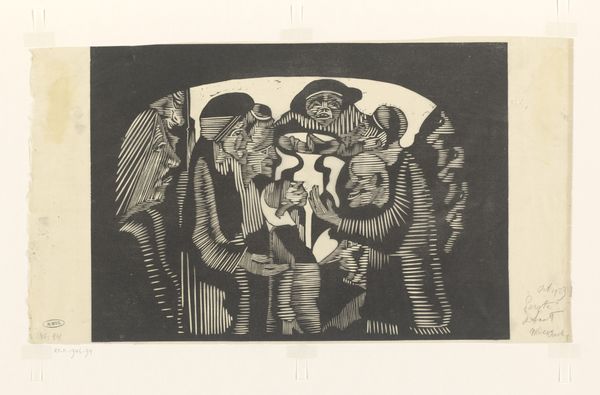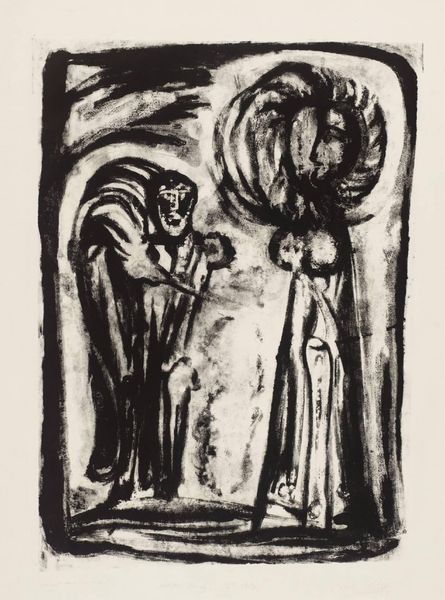
print, ink, woodcut
#
ink drawing
# print
#
figuration
#
social-realism
#
ink
#
woodcut
#
monochrome
Dimensions: image: 178 x 127 mm paper: 279 x 216 mm
Copyright: National Gallery of Art: CC0 1.0
Curator: Claire Mahl Moore created this arresting image, "The Authorities," in 1936. It's a powerful woodcut print. What’s your first reaction to it? Editor: The composition immediately strikes me. The figures seem both compressed and monumental. There’s a real tension between those powerful authority figures looming above, and the vulnerability of those below. It evokes a sense of unease and social commentary. Curator: Yes, that compression you notice amplifies the symbolism, doesn’t it? Notice the three figures at the top – the 'authorities' she depicts – their faces are largely obscured by hats and dark shadows, lending them an almost mask-like quality, while the lower figures are expressive in suffering. Editor: The contrast is deliberate and jarring. It makes you think about power structures, anonymity versus exposure. Those in authority seem detached, almost caricatured with the cigars, reinforcing the Social Realism that is attributed to Moore’s style. I would suggest it's not just about political power, but gender and race also, given the disproportionate effects such authority had on minority communities. Curator: The artist skillfully employs the medium of woodcut itself to emphasize the dramatic contrasts – the stark black and white representing a clear divide, not just of class or power, but perhaps even morality. Do you pick up on religious undertones? Is that a rosary or a set of prayer beads hanging from what appears to be a coffin or platform separating the powerful from those below? Editor: Absolutely. Religion used to manipulate and divide is hardly a new trope, but so effective here with the positioning, as you mentioned, between these classes. It also serves to highlight the false piety used to justify oppression and abuse. The faces of the 'authorities' are obscured, dehumanized by their position, rendering them symbols of oppressive forces rather than individuals. It becomes about systemic injustice rather than any singular culprit. Curator: And the upturned faces in the lower portion evoke a sense of desperate hope or pleading. It's fascinating how a black-and-white image can speak volumes about complex social realities of that era – a period of intense social change and awareness of socioeconomic disparities. Editor: I find the emotional rawness really cutting. It urges us to reflect on those same inequalities continuing today, particularly those embedded within systems of control. The artist doesn’t offer a solution, but a mirror to society itself. Curator: Indeed. A powerful piece reflecting not just the past but, unfortunately, our present. Editor: Art at its best, reminding us to stay alert, and question power dynamics.
Comments
No comments
Be the first to comment and join the conversation on the ultimate creative platform.
